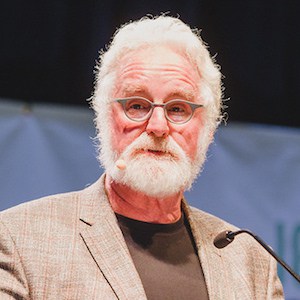Technology Meets Impact: New Online Marketplace Aims to Expand the Reach of Impact Investing
ImpactUs aims to simplify the process of impact investing through an online platform that allows investors to identify and invest in products that provide social impact. In this email Q&A with NextBillion Senior Editor James Militzer, Reginald Stanley, president and CEO of ImpactUs, explains how the platform works – and why it’s needed.
James Militzer: Briefly describe what ImpactUs will do, how it’s unique and when it will launch.
 Reginald Stanley (left): ImpactUs connects investors with impact investment opportunities. We provide an online platform, ImpactUs Marketplace, that allows investors to identify and invest in products that provide affordable homes, help small businesses, provide access to quality health care, improve the environment and impact specific places, or the whole world. The marketplace is unique because it is a full-service platform to make and manage private impact investments. We can offer a variety of products, debt and equity, community impact in the U.S. or globally, long- and short-term investments for investors that want to work independently or with a financial professional. With professional administration for all investments made through the platform we provide a streamlined and comprehensive investor experience for anyone trying to align their capital with their values.
Reginald Stanley (left): ImpactUs connects investors with impact investment opportunities. We provide an online platform, ImpactUs Marketplace, that allows investors to identify and invest in products that provide affordable homes, help small businesses, provide access to quality health care, improve the environment and impact specific places, or the whole world. The marketplace is unique because it is a full-service platform to make and manage private impact investments. We can offer a variety of products, debt and equity, community impact in the U.S. or globally, long- and short-term investments for investors that want to work independently or with a financial professional. With professional administration for all investments made through the platform we provide a streamlined and comprehensive investor experience for anyone trying to align their capital with their values.
If you are a small investor or a large money manager, ImpactUs Marketplace is a place where you can study, source and make investments according to whatever criteria you want to use. You can invest by geography, cause, financial product, returns strategy, and more.
We’re launching our platform in stages. Initially, we’re open to accredited investors by invitation only and then we’ll roll out the retail version of the platform in 2017. We are committed to offering a variety of investment opportunities in mission-driven institutions who have track records of creating significant impacts and are able to help us build stronger, more sustainable communities.
JM: Why did you see a need for this kind of platform – what missing elements in the impact investing space does it address?
RS: Until now there was not a platform that provided both searchable access to multiple private impact investment offerings with the ability to transact, in addition to all-inclusive back-office services. Right now, people who want to make individual impact investments have to approach each individual institution and make unique transactions, providing personal information such as Social Security numbers and bank information several times. Additionally, they would receive unique statements and tax reporting from each company or fund. ImpactUs Marketplace aggregates these services to allow an investor to have one primary point of contact for all transactions and administration while still working with the mission-driven institutions to understand the impact their investment has on places and causes of interest.
Additionally, we have made it possible for financial advisors to work with the platform. We believe the difficulty financial advisors have encountered working with private impact investments has held back demand for these types of investments.
At the same time, many mission-driven institutions are busy focusing on their missions, and lack the capacity to do a lot of marketing and high-touch customer service for a wide base of potential investors. Our platform holds an incredibly powerful appeal to all impact investing stakeholders, and will open up impact investing to additional audiences. Issuers get to have their products seen by a wide spectrum of potential investors that can access relevant information easily. Investors can perform their own research on issues and products, and see how their investments will be put to work for impact. Financial professionals for the first time have one place where they can source, transact and track their clients’ impact investments. The mission-driven institutions who list on our platform stand to benefit the most as we aim to expand the reach of impact.
JM: I understand you’ll start by offering investments in U.S. Treasury-certified community development financial institutions (CDFIs) and other community development organizations. Why are you starting with these investments, and how/when will you expand the marketplace?
RS: CDFIs are important players in impact investing, as they have extensive experience working in their communities and in attracting institutional investors. CDFIs were making impact investments years before the industry had a name. We were founded by two CDFIs and a lot of the early learnings that informed the development and business plan for ImpactUs were generated by CDFIs and the financial professionals that work with them today.
As an industry, CDFIs are uniquely positioned to help us bridge that gap – the gap of knowledge, of access and of reliability – that exists between investors and mission-driven institutions. Our team also has a lot of experience working with them. CDFIs will remain a key offering segment for ImpactUs, but we are pleased to already have investment opportunities outside of the CDFI sector which include sustainable agriculture, affordable housing and microfinance. We’ll continue to expand gradually and in accordance with investor demand.
JM: What types/percentage of total investments will be available to retail investors on ImpactUs, and what types/percentage of offerings will only be available to accredited investors?
RS: We’re rolling out the platform in stages, with the early stages being accredited investors on an invite-only basis, but anyone can sign up to request an invitation on our website. As we add additional products and greater capacity to the platform, we will open it to retail investors. Community Development Financial Institutions (CDFIs) – financial institutions with a mandate to work in low- and moderate-income communities – along with microfinance funds are two of the most common types of products we expect to see available for retail investors.
We find this gradual building and roll-out approach is the best one to take because it allows us to expand the platform organically and respond to investor feedback. Many people are feeling the need to do more and are seeking a way to create positive societal change on a large scale. Impact investing is an important part of this movement and we want to make it as open as we possibly can while maintaining a very high level of service.
JM: Your vice president for client engagement, Elizabeth Sessler, has said that ImpactUs holds “a broad definition of social impact because we believe that impact is in the eye of the investor.” What does this mean in practice?
RS: An essential definition of impact investing is that it has to have a defined impact that is measured along with a financial return. It’s important for investors to set their own broad goals and objectives and define social impact according to their own passions and motivations. Then when they’ve established these parameters, they can use them to inform their research on the marketplace.
JM: Why is crowdfunding such a potentially valuable tool to boost the impact investing sector?
RS: Crowdfunding has awesome potential to transform people and places because it allows individuals to directly support issues that they care about very deeply and personally. ImpactUs Marketplace does not currently support crowdfunding as defined by Title III of the JOBS Act, but we do allow for individual, accredited and institutional investors to invest in private investment opportunities that seek to create positive environmental, social and community-based impacts alongside financial returns.
We applaud those impact investing participants that have tapped crowdfunding and encourage them to continue. Our platform provides an alternative but complementary vehicle, one that we hope contributes to the acceleration and acceptance of impact investing in the broadest sense.
JM: Why do you think the impact investing sector has been afraid to embrace technology to the extent that it should? What role would you like to see technology playing in impact investing in 10 years’ time?
RS: Technology is an expensive, ever-changing and long-term investment that requires some level of predictability and standardization while impact investing has been fairly bespoke, customized for the specific needs of an investor or a fund, making the application of a technology solution more difficult.
As the industry has more and more desire to scale and as patterns have begun to emerge it is easier to see how technology solutions can be applied, while allowing impact investing to maintain some of its uniqueness that helps investors connect with the mission and impacts of the entities and places that they’re investing in.
I think technology has the power to truly grow the impact investing movement. It is shaking up the more traditional financial services sector, but it will be the backbone that allows impact investing to connect with the average investor.
James Militzer is the senior editor of NextBillion.
Photo by fernando butcher via Flickr
- Categories
- Investing, Technology



